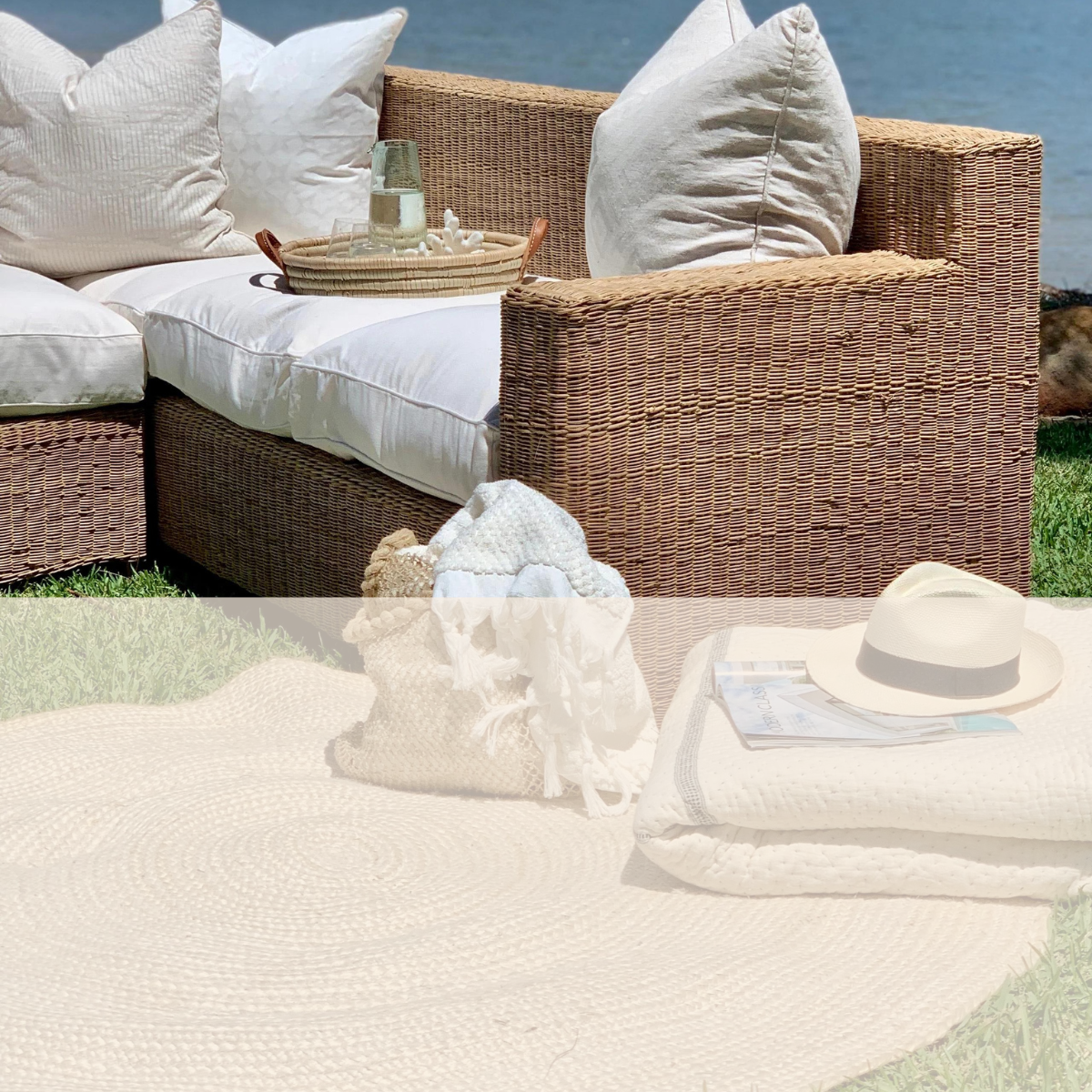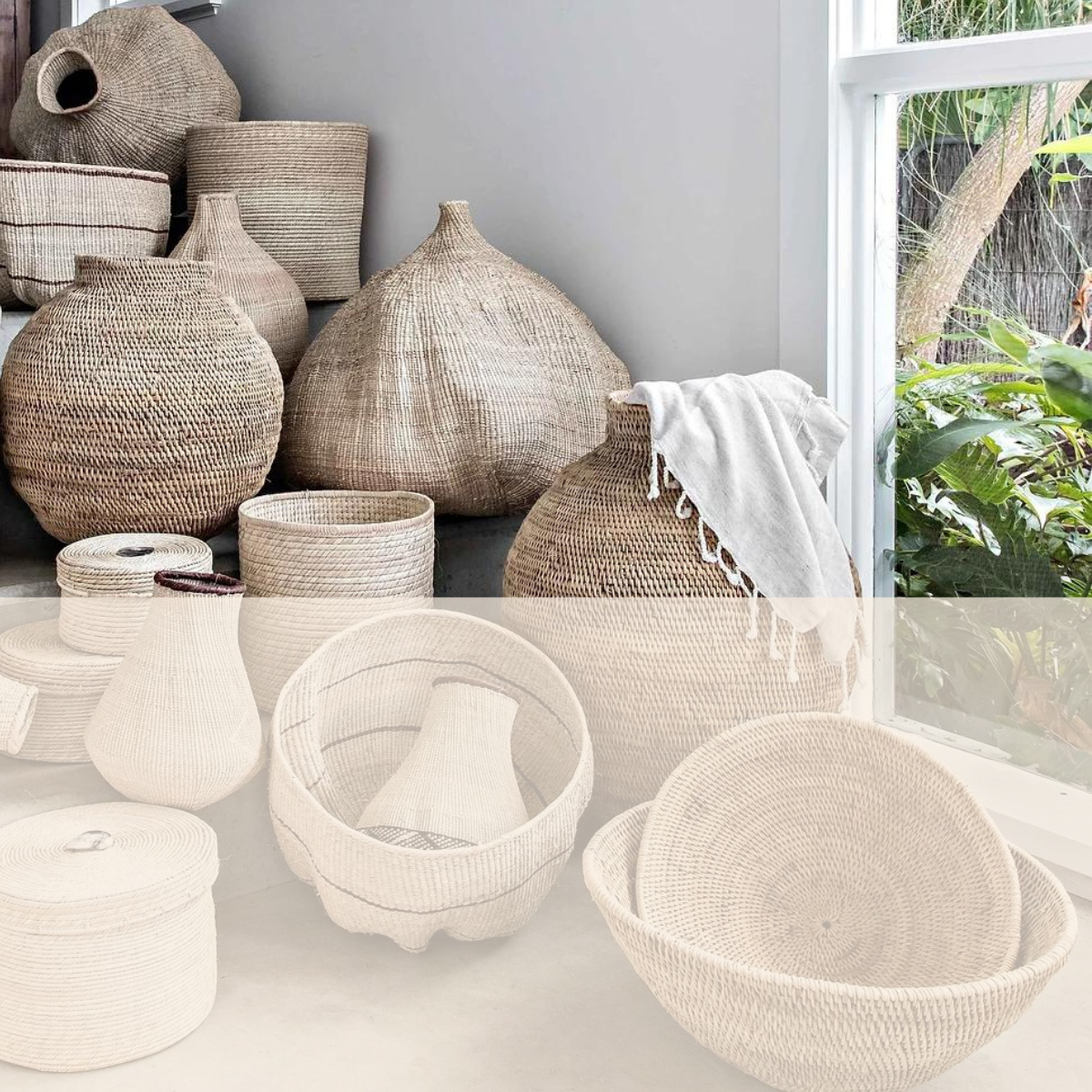Care of Sustainable, Natural Fibres
Our furniture and homewares are handcrafted, natural and completely unique, each with their own variations as a result of their organic origin. Natural imperfections and variations are not faults but rather are a celebrated feature of our pieces, as they bringing the story of their origin and makers into your home.
The natural, organic fibre integral to cane furniture requires regular cleaning and care to ensure their beauty can last for generations.
Air and Dust
Whether indoors or outdoor undercover, it is important that furniture and all woven pieces are kept dry and well-aired. This includes bringing your chairs inside if the weather is particularly humid or during a heavy rain event. Regularly cleaning, just as for all areas and contents of your home, is a vital and easy part of looking after your pieces.
Dust and dirt can build up within the dense, high quality weave of our pieces. Regular cleaning, just as for all other areas and contents of your home, is a vital and easy part of looking after your investment pieces.
Buildup of dust or moisture, and/or limited airflow, will lead to mould on any natural fibre inlcuding clothing, textiles and furnishings and is not an inherent fault of the product. The best cure is prevention, following the above steps.
Spills
Spills can be wiped off with a damp soapy cloth, then place in the sun to ensure any dampness dries out completely. If you have a trickier stain, softly sand back the area. We recommend using 240-grit sandpaper.

Furniture that is situated in coastal areas, frequently exposed to heavy mists, can form a residue over time. Iron oxide stains in wood are usually dark spots caused by prolonged exposure to water or metal. The iron oxide reacts with the tannins in the wood and stains it black.
There are several ways to restore these stubborn areas. We recommend either oxalic acid or 30 Second Outdoor Cleaner which we have used successfully to remove stains from natural fibres. Ensure that a patch test is done first, and follow safety directions. Brush or spray the affected area, and then put it out in the sun to dry and re-varnish it, if you have a varnished or painted product.
Protect and Nourish
Just like our skin, cane fibres can become brittle in particularly dry environments, when placed in excessive sun, heat or due to age. This is especially true of raw, natural state pieces with no varnish. We recommend a treatment of furniture oil to unvarnished, natural state pieces every six months to a year, depending on the environment where you keep your pieces. This will keep your fibres supple and moisturised to prevent cracking. We use the following treatments on our own furniture to protect and nourish.
- tung oil (thinned with mineral turpentine)
- boiled linseed oil (thinned with mineral turpentine)
- furniture oil spray (for one chair, or smaller pieces)
Tung Oil is preferred as it maintains the original colour, with boiled linseed oil darkening pieces slightly. Furniture oil spray also maintains the original colour.




Leave a comment
This site is protected by hCaptcha and the hCaptcha Privacy Policy and Terms of Service apply.